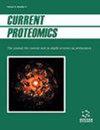金黄色葡萄球菌的流行病学和泛基因组图谱及保守的新型候选疫苗抗原的鉴定
IF 0.5
4区 生物学
Q4 BIOCHEMICAL RESEARCH METHODS
引用次数: 6
摘要
金黄色葡萄球菌(S. aureus)是革兰氏阳性菌,是主要的医院病原菌之一。它有能力获得对几乎所有可用抗生素的耐药性;耐甲氧西林金黄色葡萄球菌(MRSA)是一种众所周知的抗生素耐药性。金黄色葡萄球菌是一种全球分布的病原体,需要深入的流行病学和基因组水平的调查,以适当的治疗和预防。为探讨金黄色葡萄球菌的基因组流行病学,对355个完整基因组进行了多位点序列分型(MLST)分析。通过泛基因组分析研究了物种内的多样性,并采用减法基因组法鉴定了核心免疫原性靶点。流行病学研究鉴定出全球分布的62种不同的金黄色葡萄球菌序列类型,其中ST-8、ST-5、ST-398、ST-239和ST-30是最主要的序列类型,占分离株的50%以上。金黄色葡萄球菌的泛基因组仍然开放,有7199个基因,金黄色葡萄球菌的泛基因组中有80%的MRSA菌株。金黄色葡萄球菌的核心基因组(2025个基因)几乎稳定(占金黄色葡萄球菌基因组大小的72%),而辅助和独特基因(占金黄色葡萄球菌基因组大小的28%)正在逐渐增加。筛选2025个核心基因,确定推定的候选疫苗。在多步骤筛选程序的帮助下,从选定的潜在疫苗候选蛋白中预测出得分最高和优势的b细胞和t细胞表位。我们相信,目前的研究将为金黄色葡萄球菌的遗传流行病学和多样性提供深入的见解,并且预测的抗病原体表位可以进一步测试其在宿主内的免疫反应,并可能提供针对该疾病的体液和细胞免疫。本文章由计算机程序翻译,如有差异,请以英文原文为准。
The epidemiological and pangenome landscape of Staphylococcus aureus and identification of conserved novel candidate vaccine antigens
Staphylococcus aureus (S. aureus) is a gram-positive bacterium and one of the major nosocomial pathogen. It has the ability to acquire resistance against almost all available classes of antibiotics; Methicillin-Resistant S. aureus (MRSA) is a well-known antibiotic resistance. S. aureus is a globally distributed pathogen that need in-depth epidemiological and genomic level investigation for proper treatment and prevention.
To explore the genomic epidemiology of S. aureus in-silico Multi Locus Sequence Typing (MLST) was carried out for 355 complete genomes. Diversity within the species was investigated through pan-genome analysis and subtractive genomic approach was employed for identification of core immunogenic targets.
Epidemiological study identified 62 different sequence types (STs) of S. aureus distributed worldwide, in which ST-8, ST-5, ST-398, ST-239, and ST-30 are the most dominant STs comprising more than 50% of the isolates. The pan-genome of S. aureus is still open with 7,199 genes and there is a major contribution (80%) of MRSA strains in the S. aureus species pangenome. The core genome (2,025 genes) of S. aureus is almost stable (comprises of 72% of S. aureus genome size) while accessory and unique genes (28% of S. aureus genome size) are gradually increasing. Screening of 2,025 core genes identified putative vaccine candidates. The best scoring and dominant B-cell and T-cell epitopes were predicted out of the selected potential vaccine candidate proteins with the help of a multi-step screening procedure.
We believe that the current study will provide insight into the genetic epidemiology and diversity of S. aureus and the predicted epitopes against the pathogen can be tested further for its immunological responses within the host and may provide both humoral and cellular immunity against the disease.
求助全文
通过发布文献求助,成功后即可免费获取论文全文。
去求助
来源期刊

Current Proteomics
BIOCHEMICAL RESEARCH METHODS-BIOCHEMISTRY & MOLECULAR BIOLOGY
CiteScore
1.60
自引率
0.00%
发文量
25
审稿时长
>0 weeks
期刊介绍:
Research in the emerging field of proteomics is growing at an extremely rapid rate. The principal aim of Current Proteomics is to publish well-timed in-depth/mini review articles in this fast-expanding area on topics relevant and significant to the development of proteomics. Current Proteomics is an essential journal for everyone involved in proteomics and related fields in both academia and industry.
Current Proteomics publishes in-depth/mini review articles in all aspects of the fast-expanding field of proteomics. All areas of proteomics are covered together with the methodology, software, databases, technological advances and applications of proteomics, including functional proteomics. Diverse technologies covered include but are not limited to:
Protein separation and characterization techniques
2-D gel electrophoresis and image analysis
Techniques for protein expression profiling including mass spectrometry-based methods and algorithms for correlative database searching
Determination of co-translational and post- translational modification of proteins
Protein/peptide microarrays
Biomolecular interaction analysis
Analysis of protein complexes
Yeast two-hybrid projects
Protein-protein interaction (protein interactome) pathways and cell signaling networks
Systems biology
Proteome informatics (bioinformatics)
Knowledge integration and management tools
High-throughput protein structural studies (using mass spectrometry, nuclear magnetic resonance and X-ray crystallography)
High-throughput computational methods for protein 3-D structure as well as function determination
Robotics, nanotechnology, and microfluidics.
 求助内容:
求助内容: 应助结果提醒方式:
应助结果提醒方式:


